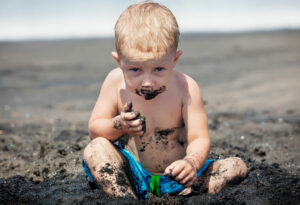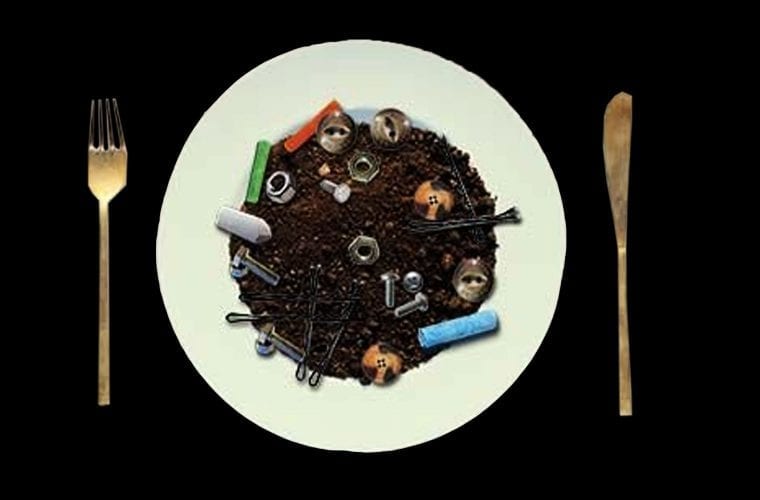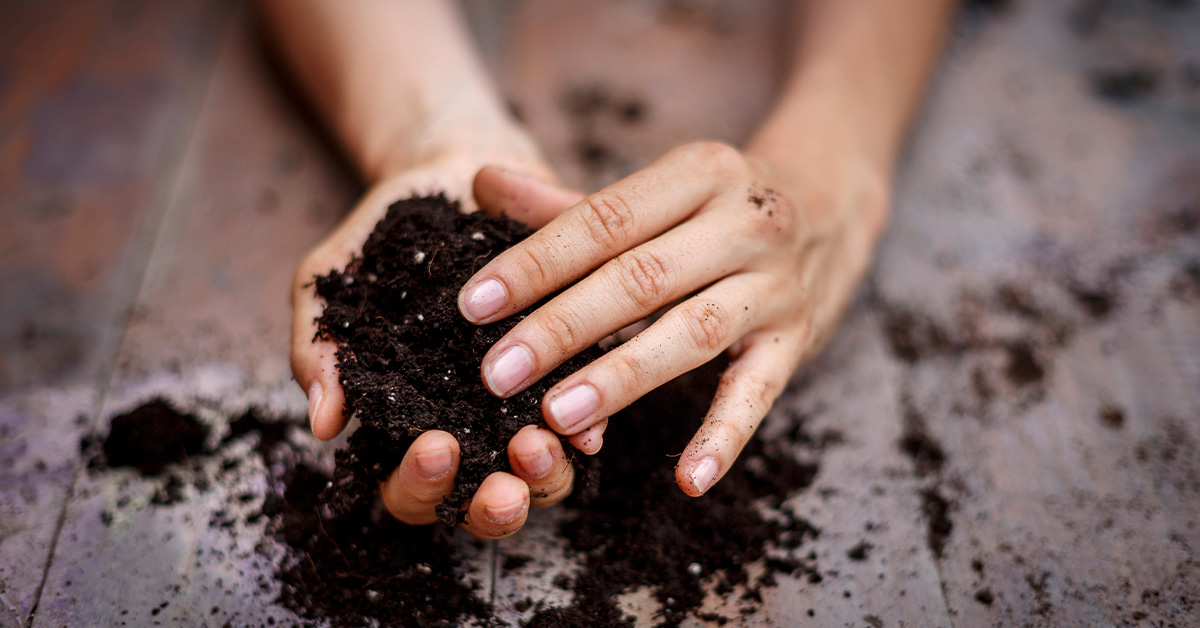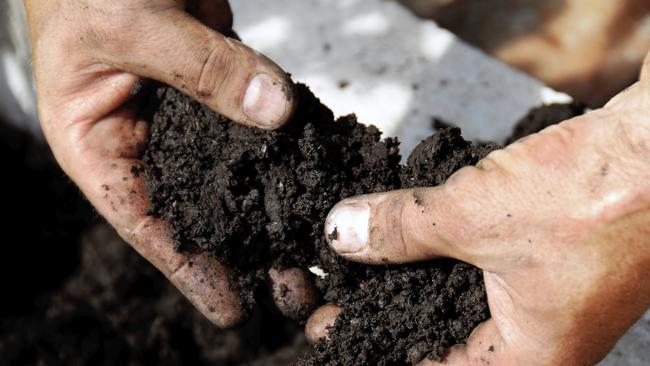Do you like to eat dirt? If so, you may have an eating dirt disorder, also known as pica. Pica is a condition that causes people to crave and eat non-food items such as dirt, chalk, paint chips, or ice. While the cause of pica is unknown, it is believed to be caused by a deficiency in certain minerals such as iron or zinc. In this blog post, we will discuss the signs and symptoms of pica, how it is treated, and prevention methods.
Contents
- 1 What Is Eating Dirt Disorder?
- 2 Signs And Symptoms of Eating Dirt Disorder
- 3 Possible Causes of Eating Dirt Disorder
- 4 Impacts of Eating Dirt Disorder
- 5 Diagnosis of Eating Dirt Disorder
- 6 Treatment for Eating Dirt Disorder
- 7 How To Prevent Eating Dirt Disorder?
- 8 How To Help Someone With Eating Dirt Disorder?
- 9 Conclusion
What Is Eating Dirt Disorder?
 Eating dirt disorder is a type of pica. Pica is an eating disorder that causes people to crave and eat non-food items such as:
Eating dirt disorder is a type of pica. Pica is an eating disorder that causes people to crave and eat non-food items such as:
* dirt
* chalk
* paint chips
Pica can occur in people of all ages, but it is most common in children between the ages of two and six years old. It is also more common in pregnant women and people with developmental disabilities. The cause of pica is unknown, but it is believed to be caused by a deficiency in certain minerals such as iron or zinc.
This eating disorder is also very common in animals, especially dogs. Eating dirt is actually normal behavior for dogs and other animals. They do this because they are trying to fulfill their nutritional needs. There may be many reasons why a person would eat dirt. Some people do it for the taste, while others do it for the texture.
Signs And Symptoms of Eating Dirt Disorder

There are many signs and symptoms of eating dirt disorder, but the most common are:
Eating large amounts of dirt
Eating large amounts of dirt generally means that the person has a strong urge to consume dirt. This can be due to the fact that they feel dirty or unclean and want to cleanse themselves. This may be also due to the fact that it can be a way of self-harm as the person may feel that they deserve to be punished. Sometimes it may even be a way of getting attention as the person may feel that no one pays attention to them.
Cravings for dirt
A person with an eating dirt disorder may have intense cravings for dirt. They may think about it all the time and feel like they need to have it. This can be very distressing as it can interfere with their daily life. They may miss work or school, and social activities in order to get their fix. There may be times when they are unable to stop themselves and end up eating dirt in public. This can be embarrassing and humiliating for them.
Weight loss
As eating dirt disorder can be a way of self-harm, the person may lose weight as they are not getting the nutrients they need from food. They may also have problems with their teeth and gums as dirt can contain bacteria which can cause infections. It can also lead to stomach problems as dirt can contain parasites that can cause gastrointestinal infections.
Compulsive Behaviors
A person with eating dirt disorder may have other compulsive behaviors such as skin picking, hair pulling, or nail-biting. This is because they are trying to cope with the anxiety and stress that comes with the disorder. These behaviors can be very harmful and cause further problems for the person. People may also suffer from depression and anxiety as a result of their disorder.
Eating soil or sand
Soil and sand are two of the most common things that people with this disorder consume. They may eat it straight from the ground, or they may mix it with food or water to make a paste. Some people even go so far as to grind up the dirt and snort it like cocaine. This can be very dangerous as it can lead to respiratory problems.
Craving specific types of dirt
Some people with eating dirt disorder may have a craving for specific types of dirt. This can be due to the fact that they are deficient in certain minerals or vitamins. For example, someone who is iron-deficient might crave red clay because it contains high levels of iron. People who are pregnant may also crave dirt as their bodies are trying to get more calcium.
There may be times when the person is able to stop themselves from eating dirt, but they may feel like they are never really free from it. It can be a lifelong battle for some people, but with treatment, it is possible to manage the disorder and live a normal life.
Possible Causes of Eating Dirt Disorder

There are many possible reasons why people might eat dirt. It could be a coping mechanism for those who are struggling with anxiety or depression. Some people might do it because they’re bored, while others might do it because they’re seeking attention.
Some of these are:
Coping Up From Anxiety or Depression
Sometimes people may treat their anxiety or depression by eating dirt. It is a way of coping with their condition. The act of eating dirt can help them to relax and feel better. Also when there are people who are not getting the attention they want, they may crave dirt as a way of seeking attention. The coping mechanism is often a reason why people with eating dirt disorder continue the act.
Punishment
Some people with eating dirt disorder may feel like they deserve to be punished. They may have low self-esteem and feel like they are not good enough. As a result, they may punish themselves by eating dirt. People may also do this if they are feeling guilty about something.
Boredom
Another reason why people eat dirt is because of boredom. When people are bored, they tend to do things that are not good for them like eating dirt. This is because they want to pass the time and do something that is not harmful. However, this can be very dangerous as it can lead to health problems. Boredom can make it hard for people to resist the urge to eat dirt.
Attention-Seeking Behaviour
As mentioned before, some people may eat dirt as a way of seeking attention. This is because they feel that no one pays attention to them and they want to be noticed. Eating dirt in public can be very embarrassing and humiliating, but some people may do it for attention. Many people can be triggered to eat dirt when they see someone else doing it.
Deficiency
Sometimes there is a deficiency in certain minerals or vitamins, which can lead to a craving for dirt. For example, someone who is iron-deficient might crave red clay because it contains high levels of iron. People who are pregnant may also crave dirt as their bodies are trying to get more calcium. People may also crave dirt if they are lacking in fiber.
Malnutrition
In some cases, people with eating dirt disorders may be malnourished. This is because they are not getting the nutrients that they need from their diet. Eating dirt can help to replenish these nutrients and make up for the deficiencies. Malnutrition can also lead to other health problems such as anemia. Therefore, malnutrition can be one of the many causes of eating dirt disorder.
Impacts of Eating Dirt Disorder

There can be many impacts of having an eating dirt disorder. These impacts can be physical, mental, or emotional. Some people may experience problems with their teeth or gums. Others may have trouble digesting food properly.
Eating dirt can also lead to feelings of isolation and loneliness. This is because many people do not understand the disorder and may not know how to help someone who has it. There can also be financial impacts as a treatment for eating dirt disorder can be expensive.
Psychological Impacts
Sometimes due to having an eating dirt disorder, people can develop other mental disorders such as anxiety or depression. This is because the act of eating dirt can be a way of self-soothing for some people. It can help them deal with negative emotions or stressful situations. People may repeatedly feel some mental anguish or pain that they are trying to numb by eating dirt.
Social Impacts
There are also social impacts of eating dirt disorder. People with the disorder may have trouble keeping friends or maintaining relationships. This is because it can be difficult to explain the disorder to others and they may not understand why someone would eat dirt. There may also be conflict within families as different members may have different opinions on how to deal with the disorder.
Physical Impacts
Also, there are physical impacts of eating dirt disorder. People may damage their teeth or gums by eating dirt. They may also get sick more often as they are exposing themselves to more bacteria and germs. Eating dirt can also lead to weight gain as it is high in calories. It can also have a negative impact on the person’s appearance as they may have dirt smeared on their face or clothes.
Financial Impacts
Financial impacts are also common with eating dirt disorder. This is because treatment can be expensive. Therapy, medication, and hospitalization can all add up. Some people may also miss work or school due to the disorder. This can lead to lost wages or lower grades. There maybe also many doctor’s visits which can add to the financial burden.
Eating dirt disorder can have many impacts on a person’s life. These impacts can be physical, mental, emotional, or social. It is important to get help if you or someone you know has eating dirt disorder. There are many resources available and treatment can make a big difference.
Diagnosis of Eating Dirt Disorder
The diagnosis of eating dirt disorder is not always easy. There are no specific tests for this condition. A diagnosis is usually made based on the person’s symptoms and medical history.
There are a few things that can be done to help diagnose eating dirt disorder. A doctor may ask the person about their diet and whether they have any other medical conditions. The doctor may also do a physical exam and order blood tests.
Also, the diagnosis may be made based on the person’s family history. If other members of the family have an eating dirt disorder, it is more likely that the person has the condition. For the diagnosis, one should always consult with a doctor or mental health professional.
Treatment for Eating Dirt Disorder

There is no specific cure for eating dirt disorder. However, there are treatments that can help manage the symptoms and make the condition more manageable.
Medications
Medications are one of the most important treatments for eating dirt disorders. There are a few different types of medications that can be used to treat the condition.
The first type of medication is antipsychotics. These drugs are used to treat psychosis, which is a common symptom of eating dirt disorder. Antipsychotics can help to reduce hallucinations, delusions, and paranoia.
The second type of medication is antidepressants. These drugs are used to treat depression, which is another common symptom of eating dirt disorder. Antidepressants can help to improve mood, energy levels, and sleep.
The third type of medication is antianxiety medication. These drugs are used to treat anxiety, which is yet another common symptom of eating dirt disorder. Antianxiety medications can help to reduce worry, nervousness, and fear.
Therapy
Therapy is another important treatment for eating dirt disorder. There are a few different types of therapy that can be used to treat the condition.
The first type of therapy is cognitive-behavioral therapy (CBT). This type of therapy helps people to change their thinking patterns and behaviors. CBT can help to reduce symptoms such as hallucinations, delusions, and paranoia.
The second type of therapy is exposure therapy. This type of therapy helps people to confront their fears and learn to cope with them. Exposure therapy can help to reduce anxiety and improve mood.
The third type of therapy is family-based therapy. This type of therapy helps families to understand and support their loved ones with eating dirt disorders. Family-based therapy can help to improve communication and reduce stress.
Hospitalization
In some cases, hospitalization may be necessary for people with eating dirt disorders. This is usually only the case if the person is a danger to themselves or others. Hospitalization can help to keep the person safe and provide them with intensive treatment.
Intensive treatment may include medication, therapy, and other treatments. Hospitalization can also provide a break from everyday life and allow the person to focus on their recovery.
Online Support Groups
Online support groups are one of the best resources for people with eating dirt disorders. These groups provide support, information, and understanding. They can be a great way to connect with others who are going through similar experiences. These support groups provide a safe place to share experiences and learn from others.
Eating dirt disorder is a serious condition that can be difficult to manage. However, there are treatments that can help. Medications, therapy, and online support groups are all great resources for people with eating dirt disorders. If you or someone you know has an eating dirt disorder, don’t hesitate to seek help.
How To Prevent Eating Dirt Disorder?

Preventing eating dirt disorder is not as difficult as it might seem. There are a few key things you can do to help prevent your child from developing this strange condition.
The first thing you can do is make sure that your child’s diet is rich in essential nutrients and minerals. This means making sure they eat plenty of fruits, vegetables, and whole grains. You should also limit their exposure to sugary and processed foods.
Another key prevention method is to encourage your child to play outside in dirt and grass regularly. This will help them build up a strong immune system that can resist the bacteria that cause eating dirt disorder. It can also help to reduce stress levels, which can trigger the condition.
Finally, make sure to keep your child’s hands and nails clean. This will help to prevent them from picking up harmful bacteria that could lead to eating dirt disorder.
By following these simple prevention methods, you can help ensure that your child doesn’t develop an eating dirt disorder. If they do happen to develop the condition, there are treatments available that can help them manage it effectively. With the right care, your child can lead a happy and healthy life despite this strange condition.
How To Help Someone With Eating Dirt Disorder?
Helping someone with an eating dirt disorder can be difficult, but there are some things you can do to make it easier for them. Some of these tips are:
Listen To Them
Listening to someone with an eating dirt disorder can be difficult, but it is important to try. This will help them feel heard and understood, which can be very helpful. Also, listening to their experiences can help you learn more about the condition and how to best help them.
Be Patient
Eating dirt disorder can be a very difficult condition to deal with. It is important to be patient with someone who has this condition. They may need time to adjust to their new diet and lifestyle, and it is important to give them that time.
Encourage Them To Seek Help
If someone you know has an eating dirt disorder, it is important to encourage them to seek help. This condition can be difficult to deal with on your own, and professional help can be very helpful. There are many resources available to people with this condition, and seeking help is the best way to ensure that they get the help they need.
MantraCare is a website dedicated to helping people with eating dirt disorders. We have a wide range of resources available, including articles, videos, and an online forum. We also offer one-on-one counseling for people with this condition. If you or someone you know needs help, please visit our website or contact us today.
By following these tips, you can help make life easier for someone with an eating dirt disorder. With your support, they can manage their condition and lead a happy and healthy life.
Conclusion
Eating dirt disorder is not currently recognized as a diagnosable condition by any major mental health organization. However, this doesn’t mean that it’s not a real and serious problem for some people. If you think you may have an eating dirt disorder, it’s important to talk to your doctor or mental health professional. They can help you find the resources and support you need to manage your symptoms and live a healthy life.
You can also contact us for more information about eating dirt disorder and how it can help you to cure eating dirt disorder. We are always happy to chat and answer any questions you may have. MantraCare is a platform that can be used to help you find inner peace and calm. It is available on the App Store and Google Play. Give it a try today! You may be surprised at just how much better you feel. Thanks for reading. You can also book a therapy or download our free Android or iOS app.


